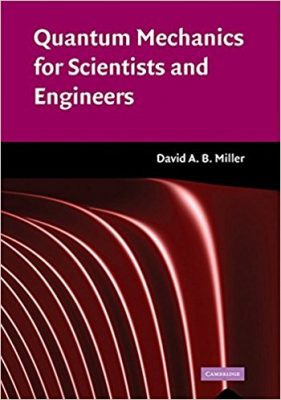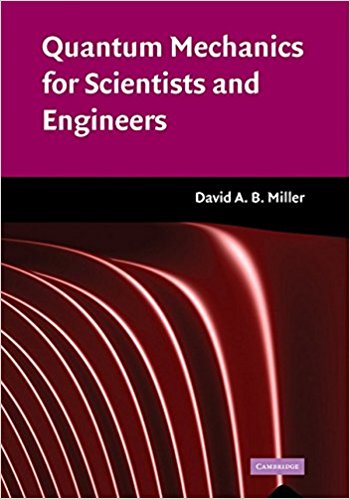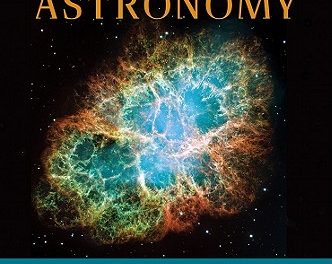 Author: David A.B. Miller
Author: David A.B. Miller
Publisher: Cambridge University Press – 550 pages
Book Review by: Venkat Subramaniam
Most non-physicists will likely not have answers to basic questions such as:
- Why is the color of a filament in a light bulb a warm yellow or a hot metal a glowing red?
- Why is the flower pot a terra-cotta orange color and the tennis ball a fluorescent yellow?
- Why can a diamond scratch almost anything, but a pencil just slide and leave black line?
- Why are some materials strong, while other materials are brittle?
- Why do metals conduct electricity and heat, but glass does not?
- Why do metals reflect light, and why is glass transparent?
- Why are some materials magnetic and others are not?
- Why is one substance heavy and the other, light?
Physicists however, especially those who are familiar with quantum mechanics, will have answers to the above questions. While we need other sciences besides physics – such as chemistry and materials science – to answer these questions adequately, the other sciences will rely on quantum mechanics to explain how materials are put together.
As a matter of fact, with some knowledge of chemistry and materials scientists, physicists with a thorough familiarity of the important principles of quantum mechanics will be able to answer the questions above precisely and completely, asserts the author David Miller
Miller, a professor of applied physics and electrical engineering at Stanford University, has taken into account the fact that people not (or not yet) familiar with quantum mechanics (such as students, or anyone who has some interest in this subject) will be reading and using this book, so he has written it in a way that such people will not have too difficult a time understanding the material covered in it.
To give you a broad overviews of what’s covered, we list below the titles of its 19 chapters:
- Introduction
- Waves and Quantum Mechanics – Schrodinger’s Equation
- The Time-Dependent Schrodinger Equation
- Functions and Operators
- Operators and Quantum Mechanics
- Approximation Methods in Quantum Mechanics
- Time-Dependent Perturbation Theory
- Quantum Mechanics in Crystalline Materials
- Angular Momentum
- The Hydrogen Atom
- Methods for One-Dimensional Problems
- Spin
- Identical Particles
- The Density Matrix
- Harmonic Oscillators and Photons
- Fermion Operators
- Interaction of Different Kinds of Particles
- Quantum Information
- Interpretation of Quantum Mechanics
Why is the theoretical knowledge of quantum mechanics, and its practical applications that have grown since the German physicist first began studying it in 1900, important to us?
Can you imagine how your life would be like without automobiles, cell phones, computers, washing machines, staplers, or even eyeglasses – all of which were developed with the constantly growing knowledge of quantum mechanics and its practical applications over more than a century? If you visualize your life without these, you realize how important this subject has been in giving us the lifestyle we now have !
David A.B. Miller is a professor of Electrical Engineering and in what is called a Courtesy Appointment, a professor of Applied Physics at Stanford. To know more about his professional career as an engineer and scientist, visit his website at http://www-ee.stanford.edu/~dabm/
He has been teaching a pair of quantum mechanics classes at Stanford University for about 10 years now. This book, Quantum Mechanics for Scientists and Engineers, is based on material he developed over many years teaching these courses. He has now taught, as of April 10, 2017, more than 500 students in these classes, ranging from undergraduates in various different disciplines to a broad range of graduate engineers and scientists.
The courses are aimed at anyone with a good basic understanding of science and mathematics to about a second year or advanced first year college level. He does not presume that the students are necessarily physicists, and he has been careful to minimize the amount of physics required of the reader to know. He has also summarized the key background physics and mathematics in appendices.
He has made the solutions to some problems publicly available, which should particularly help anyone teaching themselves from this book. This book should therefore be accessible to a broad range of scientists and engineers while still giving a solid grounding in the subject at a level suitable even for physicists.
The basic topics covered include those one would expect in a first serious physics quantum mechanics course. Some of the more advanced topics are useful both to physicists and to other scientists and engineers, including some important practical areas such as semiconductor devices, nanostructures and modern optics.






